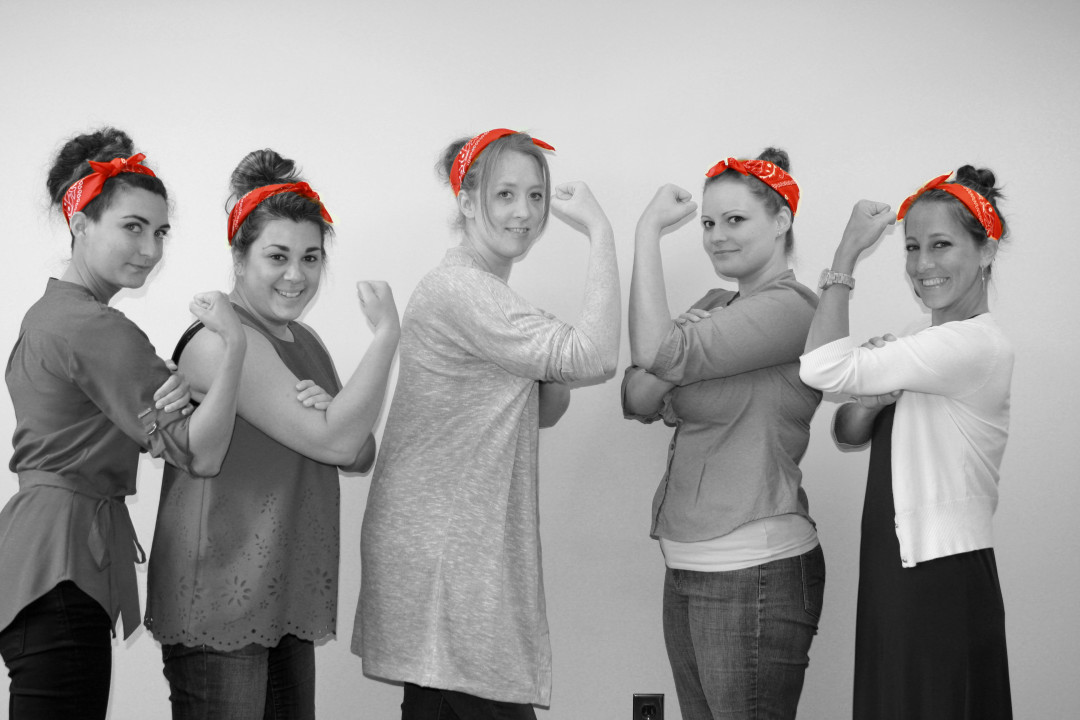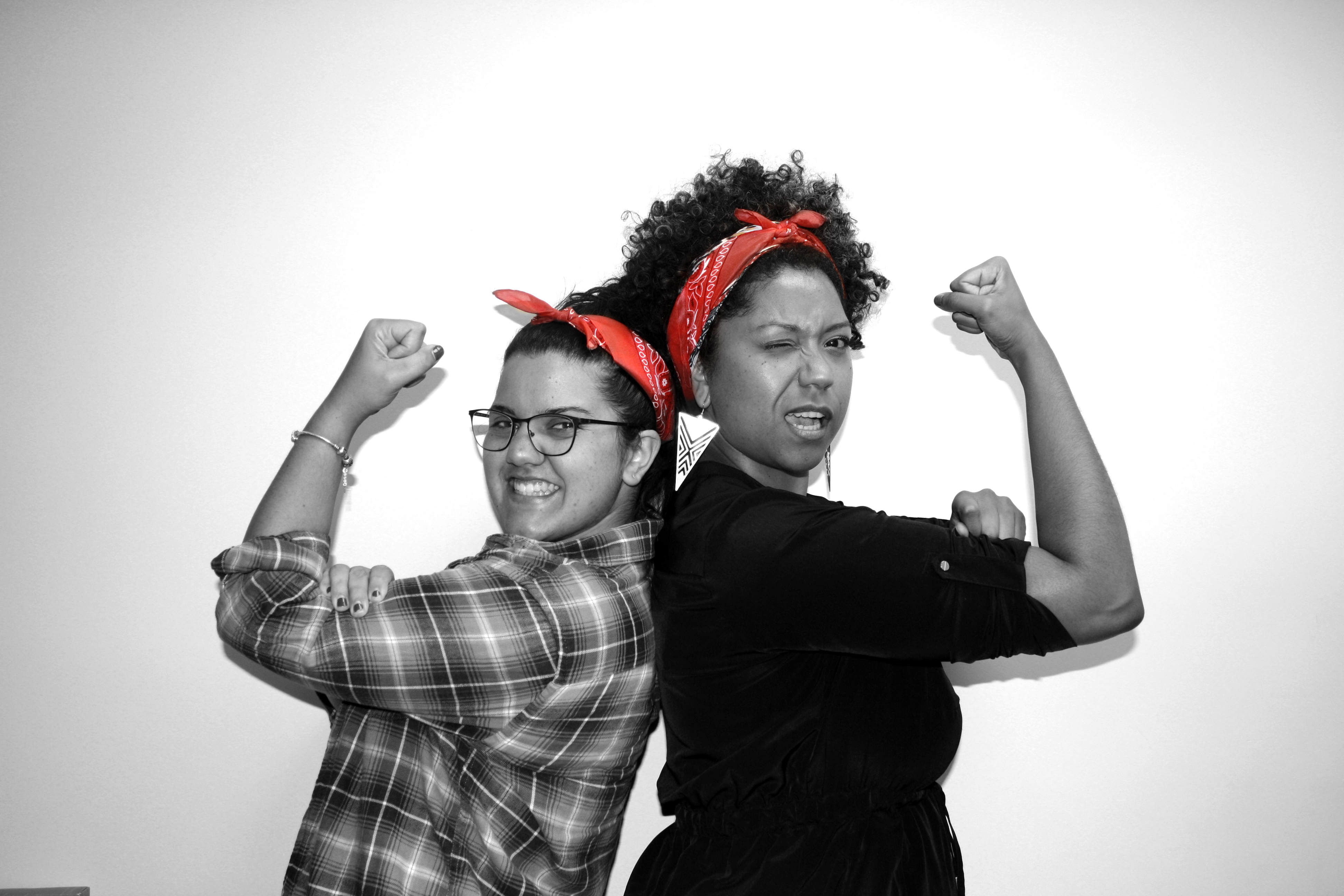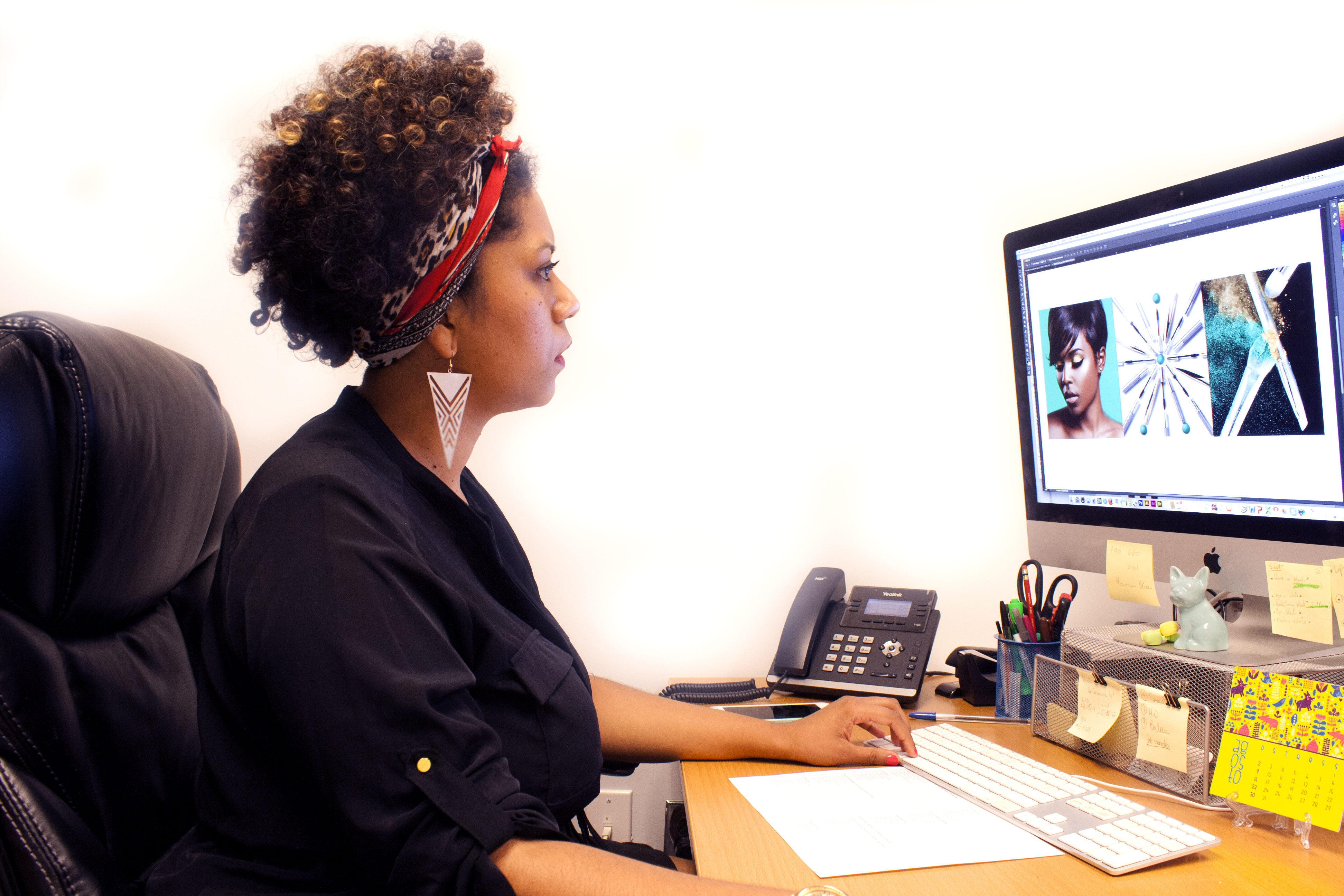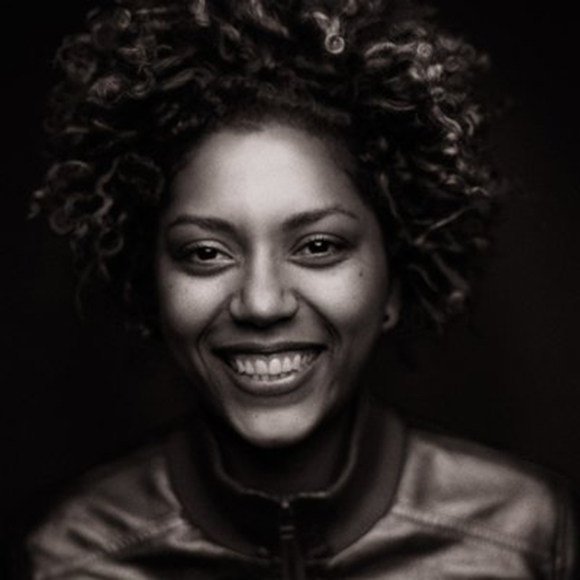
Today marks a very important day in history. On August 18, 1920, the 19th amendment of the U.S. Constitution granted American women the right to vote. While women have gained a strong voice, we are still standing up and fighting for equality throughout the world and all industries. #BeIntrigue is inspired by many women, dating back to WWII icon, Rosie the Riveter up to the voices of the contemporary feminist movement including Maya Angelou, Sophia Bush and Emma Watson.
As seen in one of Intrigue’s favorite shows, Mad Men, creative agencies were run by men. I was blown away after reading an article I came across on Fast Company. I learned that even today, in the 21st century, only 3% of creative directors are female. Meanwhile In corporations, they constitute 50% of managers and professionals, 58% of purchasing agents, and 53% of wholesale and retail buyers. Women control about 80% of consumer spending yet males are the creative directors behind the branding of these products. 90% of women are saying that brands don’t understand women. We are happy to say that Intrigue goes against that 3% statistic by being a company that is 67% women with 2 female Art Directors and 1 Female Account Manager.
Of course, we would never undervalue our male colleagues because we have incredibly talented, hard-working men here at Intrigue. #BeIntrigue seeks to create a working space where different perspectives and ways of thinking can flourish and grow into great concepts and final products. I took a moment to sit down with one of our Art Directors, Thais dos Anjos about being one of the 3%!
.

Let’s start off by telling us a little about yourself.
I received a bachelor’s degree in Industrial Design. My situation is a little different because I come from a different market in Brazil. The scene of design is completely different but it’s all still the same in the sense of gender equality. I started working in my field of study at a younger age. In Brazil I started work at 17. We do college and work together. While we are in college we are interning. You start working in the market earlier, but you don’t always know what you’re doing. You’re still discovering yourself. In some ways it’s good because you get a good vision of all the possibilities, but on the other hand it’s bad because you start so young. After 15 years you decide what you want to change in your career.
My first job was in the fashion industry and I worked in the visual department. We took care of everything, from the print of the clothes all the way to the show where we needed to create the visual of the set, invitations and everything. We always needed to be creating and you never got used to the same kind of job. You always needed to re-create yourself. At that point, I was an intern and it didn’t matter if you were a woman or a man, you had to work really hard. You needed to be very smart and learn a lot. And I learned a lot.
After that I moved and started my career in editorial at a publication. I learned to edit content and create the content and visualize it as a concept. A good designer has to think more. You have to understand the client and do research and combine content with powerful visuals. Some designers just want to make something beautiful and they forget to focus on the content. I think the fight in the industry is content versus aesthetics. You have so many people who can design beautiful imagery, but concept for me is also important. You learn how to understand and then you edit. I worked closely with journalists so i learned to understand the subject before the design. You have to figure out how to sell and make someone want to stop and read.
I worked for about six years at Playboy Magazine in Brazil. It was a good opportunity. You’re not working in just one topic. Playboy is a lifestyle magazine so I could work in fashion, cars, beauty, health and women. It provided an entire process of creation. Playboy was a hard place to work because all the editors were mainly men and older than me. I was really young. I was a female and only 20, so I had to prove myself a lot. I had to read 10x more, and I had to prove that even if I was young, and a girl I was smart and I knew what I was doing. There were many women in the art department so I tried to learn as much as I could. I think as women, we learn more and think more and noticed some more details. There is a contrast between the women and the men, but I learned from both sides. After this, moved to New York and was offered a publication, for which I’ve won a few awards. I love to draw, it’s my real passion. I wanted to stay here in New York for work. I found a great job at Intrigue, and they sponsored my visa.
You’ve been in the industry for a while now. Were there any difficulties being a women trying to work up to where you are today and if so what are some of them you can share with us?
Sometimes, as women, we feel like “oh man, we’re women. We don’t have a chance,†but actually we need to find and focus on finding the place where we can fit and really make a difference. There will always be difficulties and opposition, but it’s how you face these opportunities in the moment that really matter. I had two big challenges when first starting my career. I was a woman and I was really young. You’re always trying to prove that you will make it, but you also have the ability to prepare yourself better. My career was always in a “man’s world.†I always had to think of the man. I had to show that I wasn’t just “cuteâ€. I had to prove myself. Whenever I participated in things like comic con, it was funny because I didn’t fit the stereotype. I didn’t look like a “nerd†or wear a costume. I was fashionable, and people would come up to me and ask me where my boyfriend was, but I was there as me, for me. Sometimes women just freeze in fear when they are confronted in these types of situations. Things have changed a lot and really quickly. Five years ago, things were so different. Now you see a lot of female artists who have a strong voice.
What are some things that you think a female art director can bring to a brand?
We are crazy for details! You really have to figure out who your customer is and some agencies don’t know how to figure that out or they don’t want to listen. This happens a lot in advertisement. In Brazil, we have a problem when they sell beer. They connect it with sexuality so it targets men but uses women in a way that’s completely wrong and disrespectful. I don’t want to be used or seen as an object. It’s often more difficult for men to try to think or portray women accurately. It’s difficult when you don’t have the experiences or mindset of the target group you are trying to think like. Most of the time, the attempts are shallow and one-dimensional. Sometimes men are narrow-minded and they don’t want to listen. In art, when you have a female director, you have someone who is listening and connecting a little more. Women have more empathy, which is an important trait to have when trying to connect with a target market in a more authentic way.
Have you seen a change in the female to male employee ratio from when you started your career to now?
It changes a lot. The economy changes. A man can no longer be the only one working from a single household, so women had to start working as well. Now women realize they can do this and also handle more than one job. The times have changed, but we still need to fight for more social and financial economy. My country has a woman president now who still suffers because she’s a woman. If the president was a man they wouldn’t make such a big deal out of his gender. A woman can now find more opportunities to be on top in her field. I think the industry understands that women have a voice now; they have an opinion. It’s a partnership now, but women have an important place in society. There is a lot of fear to stand up but I’m hoping to see less and less fear.

